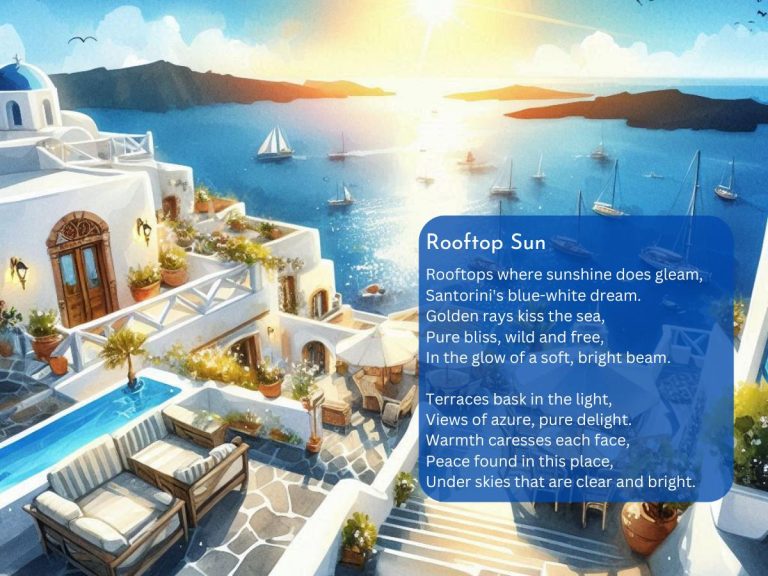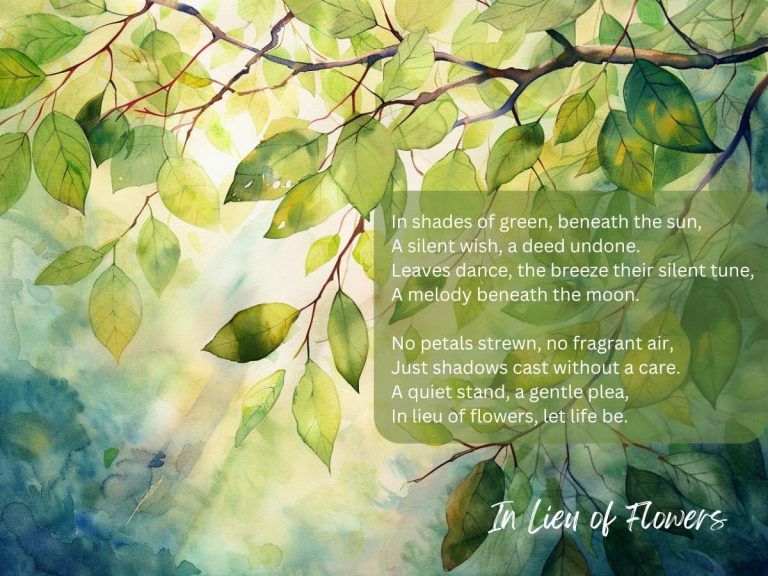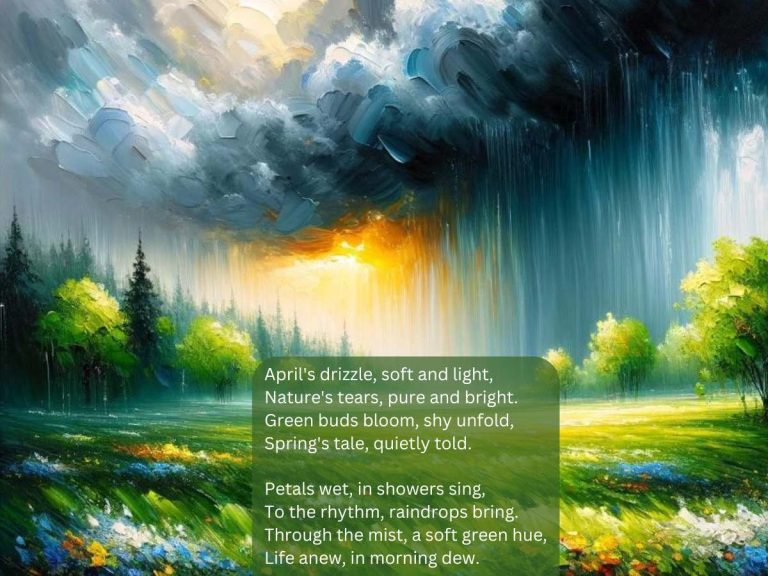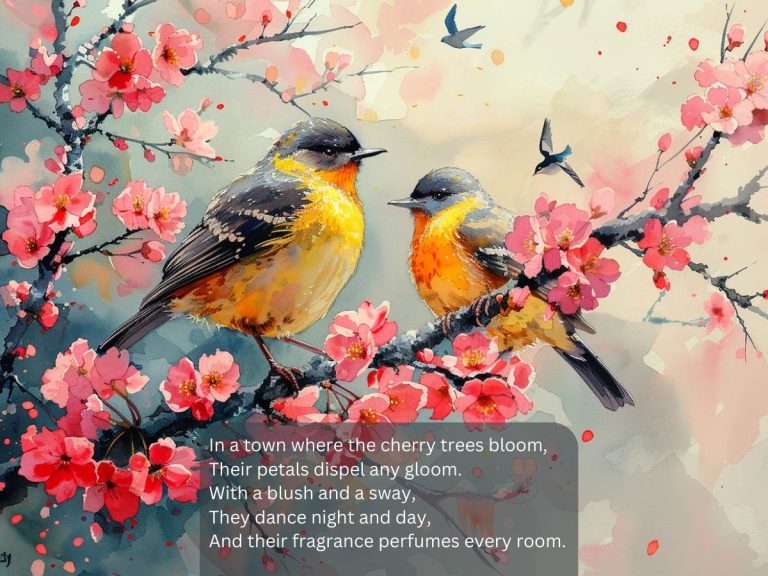Earth Day Haiku Poems
Table of Contents
Frail Earth
Weep, sky's heavy tears,
Frail Earth sighs beneath our weight—
Leaves hold whispered pleas.

Meaning
This haiku for Earth Day captures the image of the Earth as fragile and burdened by human impact. The visual of the sky weeping and the Earth sighing under the strain reflects the environmental stress that our planet endures. The leaves that “hold whispered pleas” symbolize the silent calls of nature asking for care and respect from humanity.
Inspiration Behind
I imagined standing under an ancient tree, feeling the weight of the world’s woes. Each drop of rain seemed like a tear for the Earth’s struggles. This powerful moment of connection with nature inspired the poem, urging us to listen more closely to the silent yet urgent messages of our environment.
Earth’s Gentle Touch
Green whispers of life,
Rain's gentle fingers soothe soil—
Earth dances in bloom.
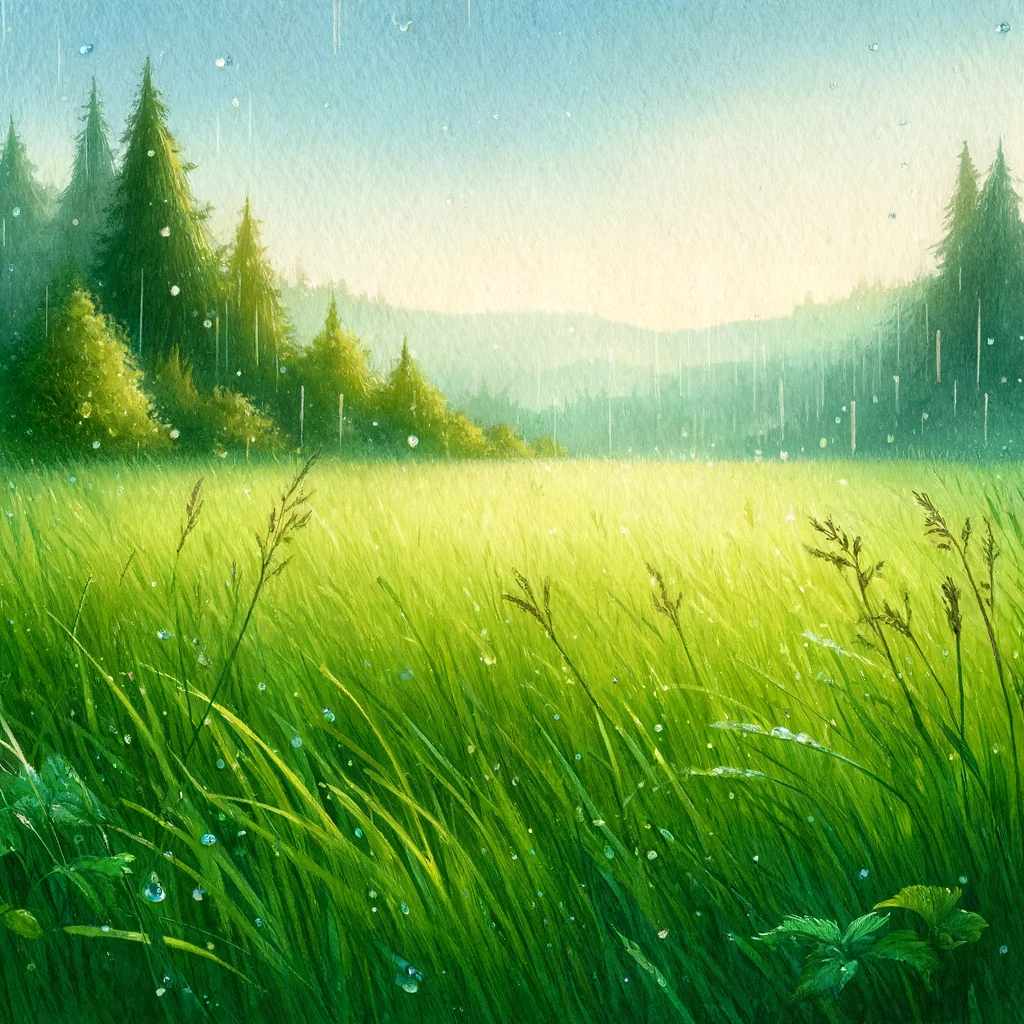
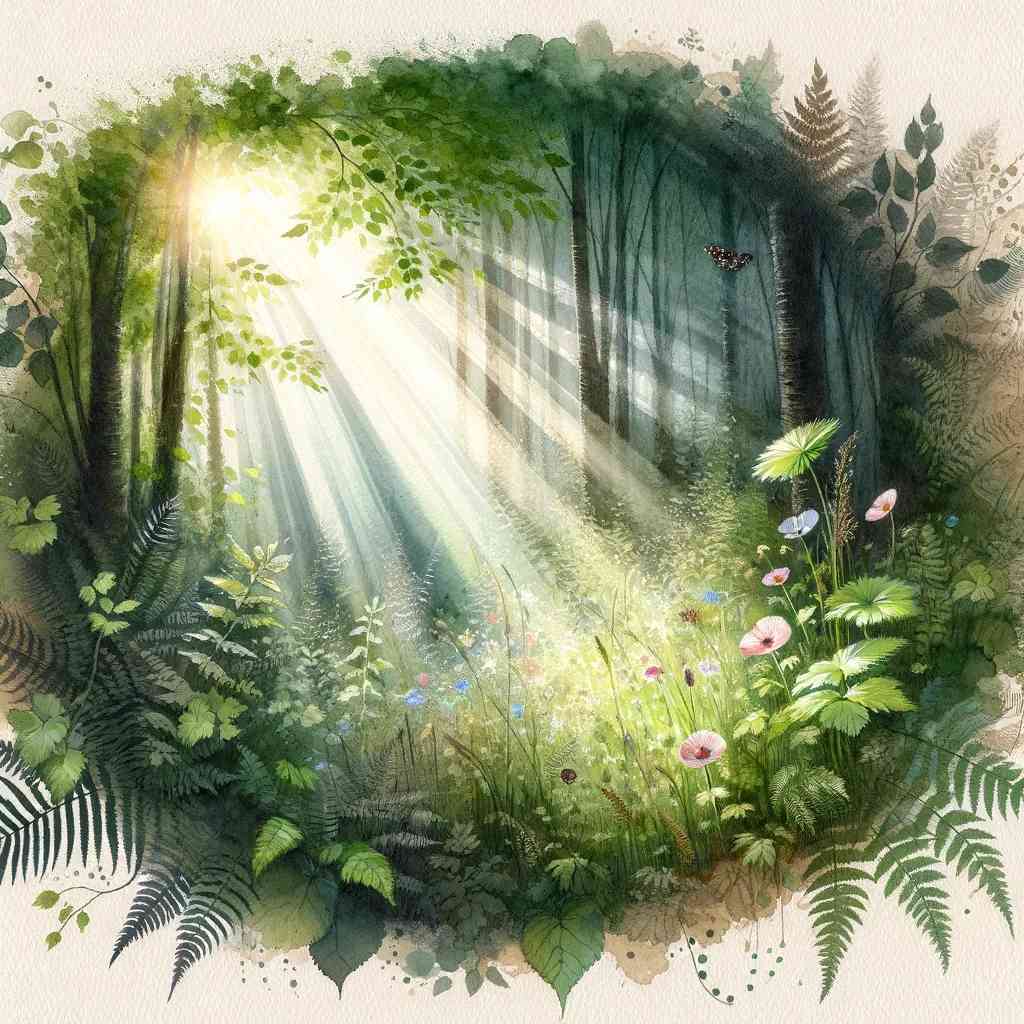
Meaning
This haiku celebrates Earth Day by highlighting the rejuvenating essence of nature. The imagery of “Green whispers of life” suggests the quiet yet powerful growth of plants, vital for life on Earth. Rain, described as having “gentle fingers,” is portrayed as nurturing the soil, a fundamental act that supports life. The final line, “Earth dances in bloom,” personifies the planet joyfully celebrating its own vitality and beauty through blooming flowers and thriving ecosystems.
Inspiration Behind
As I sat by my window watching the spring rain, I felt inspired by the way the water invigorated the garden outside. It seemed as though each droplet revived the plants, coaxing them into a vibrant dance of colors. This simple, yet profound interaction between water and earth sparked my imagination, leading me to capture the essence of Earth Day in a haiku. Each line of the poem is a snapshot of this beautiful, cyclical nourishment that sustains all life.
Silent Canopy
Whispering leaves hush,
Shadows cradle secrets close—
Peace beneath boughs' breath.
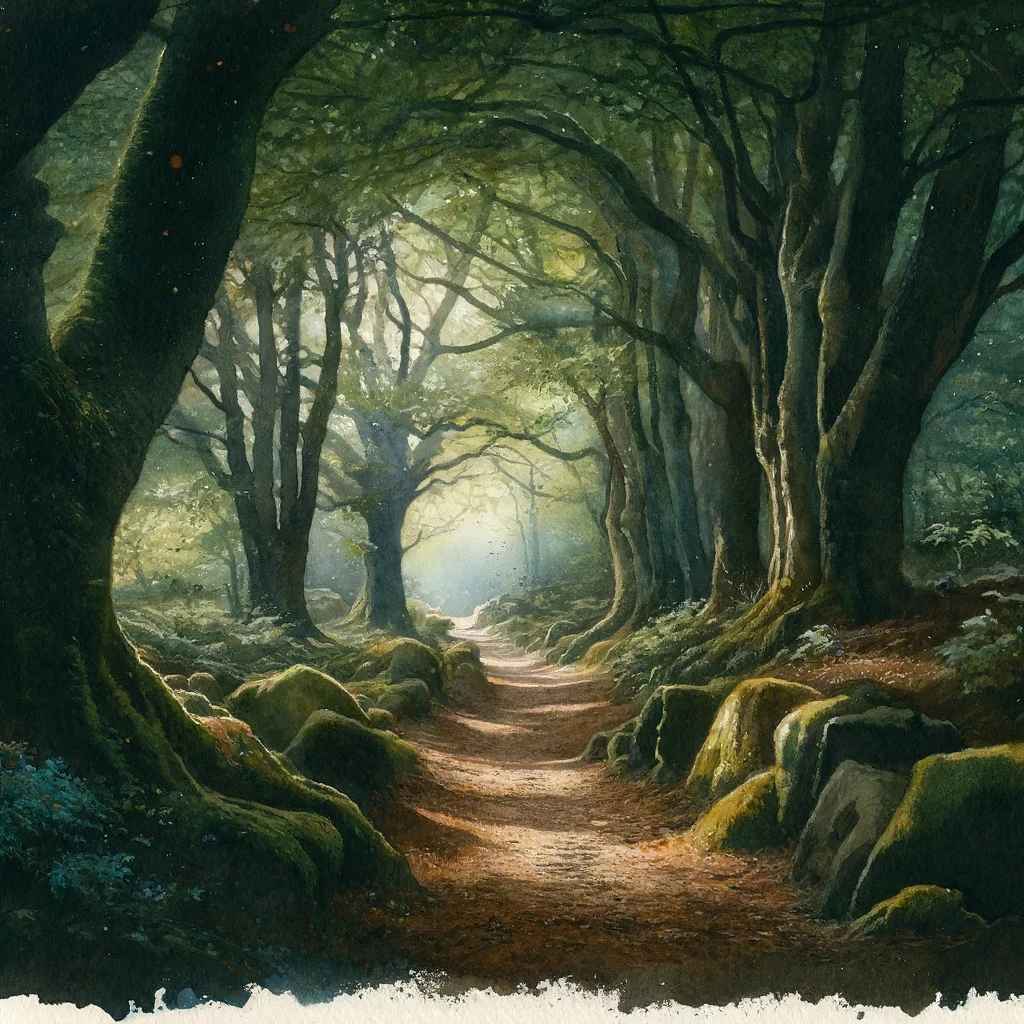

Meaning
“Silent Canopy” delves into the serene and protective role of tree canopies in nature. The first line, “Whispering leaves hush,” portrays the gentle rustling of leaves as a calming, silencing force. The second line, “Shadows cradle secrets close,” suggests the intimacy and mystery held within the shaded, sheltered spaces under trees, where diverse forms of life thrive unnoticed. The final line, “Peace beneath boughs’ breath,” evokes the tranquil atmosphere beneath the canopy, where the subtle movement of air seems like the quiet breathing of the forest itself.
Inspiration Behind
I was inspired to write this haiku during a quiet morning walk in a dense forest. The way the light filtered through the canopy and the soft sounds of nature seemed to create a hidden world of peace and stillness. It felt as though the trees themselves were guardians of tranquility, their branches a sanctuary for both the mind and the wildlife residing there. This experience reminded me of the importance of trees in our ecosystem, not just as physical entities, but as emotional and spiritual protectors.
Rivers’ Chant
Murmurs over stones,
Rivers chant ancient wisdom—
Guard these sacred flows.
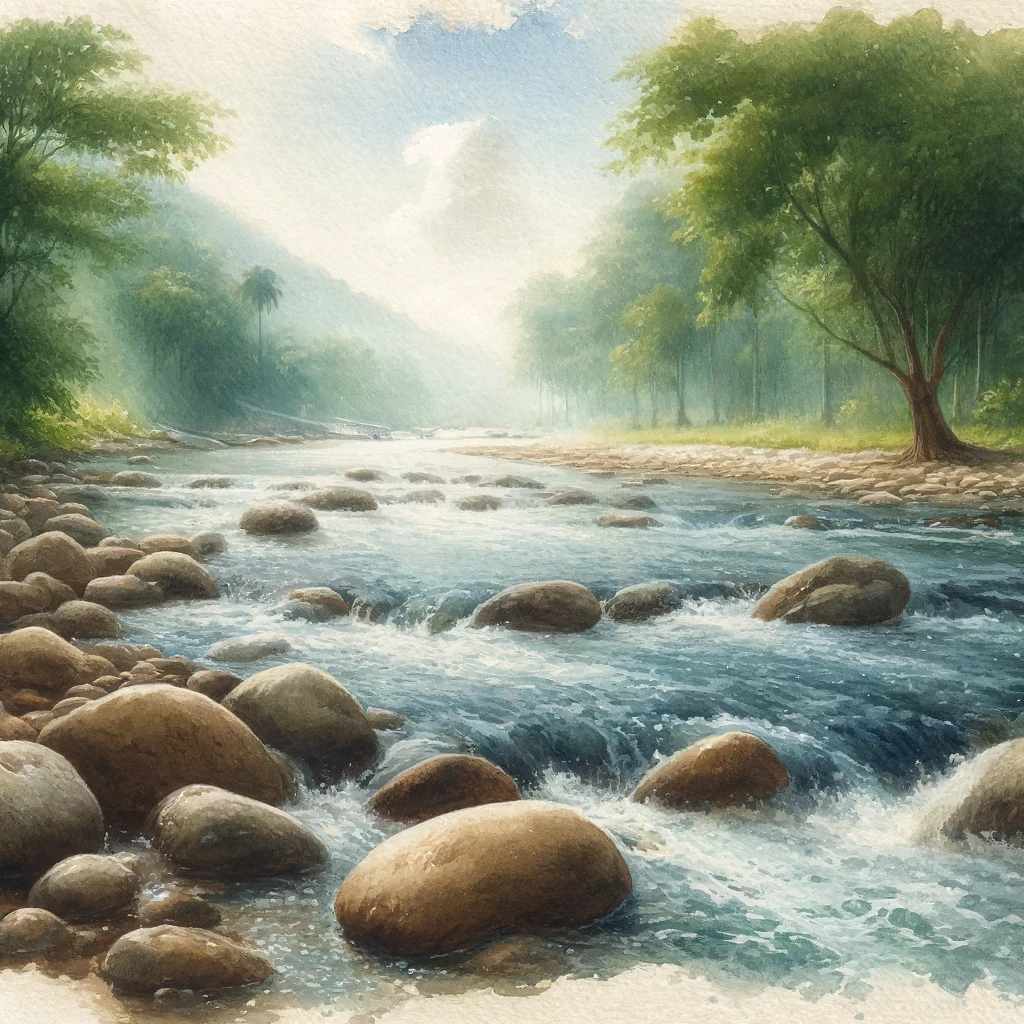

Meaning
“Rivers’ Chant” is a haiku that captures the mesmerizing and calming effect of river sounds, which are likened to an ancient chant of wisdom. The first line, “Murmurs over stones,” describes the soothing sounds created as water flows over riverbed stones. The second line, “Rivers chant ancient wisdom,” personifies rivers as wise entities teaching us about resilience and continuity. The final line, “Guard these sacred flows,” is a call to action, urging us to preserve and protect our vital waterways for their invaluable ecological and cultural significance.
Inspiration Behind
Sitting by the riverside one afternoon, I was drawn into the rhythmic, almost musical sound of the water. It seemed as if the river was speaking, imparting lessons of persistence and the importance of flowing despite obstacles. This profound experience led me to write “Rivers’ Chant,” a reflection on the essential role rivers play in our lives and an appeal to honor and safeguard these natural resources as treasured sanctuaries.
Green Pulse
Life pulses through green,
Each leaf, a heartbeat in sync—
Nature’s web, woven.
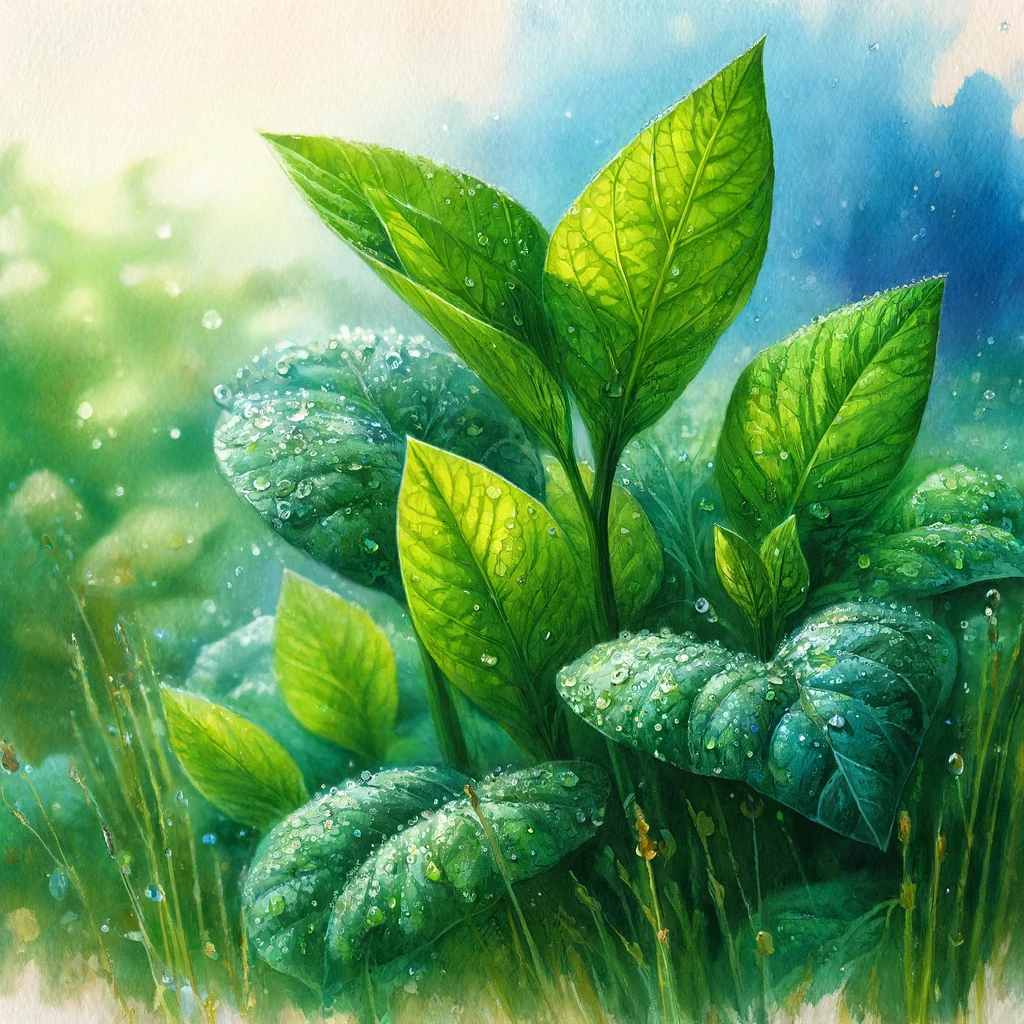
Meaning
“Green Pulse” is a haiku that captures the vibrant life force inherent in nature, symbolizing the energy that flows through every plant. The first line, “Life pulses through green,” introduces the concept of nature’s vitality pulsating within its verdant hues. The second line, “Each leaf, a heartbeat in sync,” portrays each part of nature as integral to the life cycle, pulsing with a shared rhythm. The final line, “Nature’s web, woven,” highlights the interconnectedness of all living things, bound together in a delicate and intricate ecosystem.
Inspiration Behind
The inspiration for this haiku came during a quiet morning walk through a lush garden. Observing the dew on the fresh grass and the subtle movements of leaves in the gentle breeze, I felt a deep connection to the energy flowing around and within me. It struck me that every part of this green space was connected, each plant contributing to a larger, vibrant network of life. This realization of unity and interdependence is what I aimed to encapsulate in “Green Pulse,” a tribute to the powerful life force that sustains all of nature.
Ashen Waters
Grey veils mute the blue,
Life stifled in silent depths—
Tears blend with the rain.
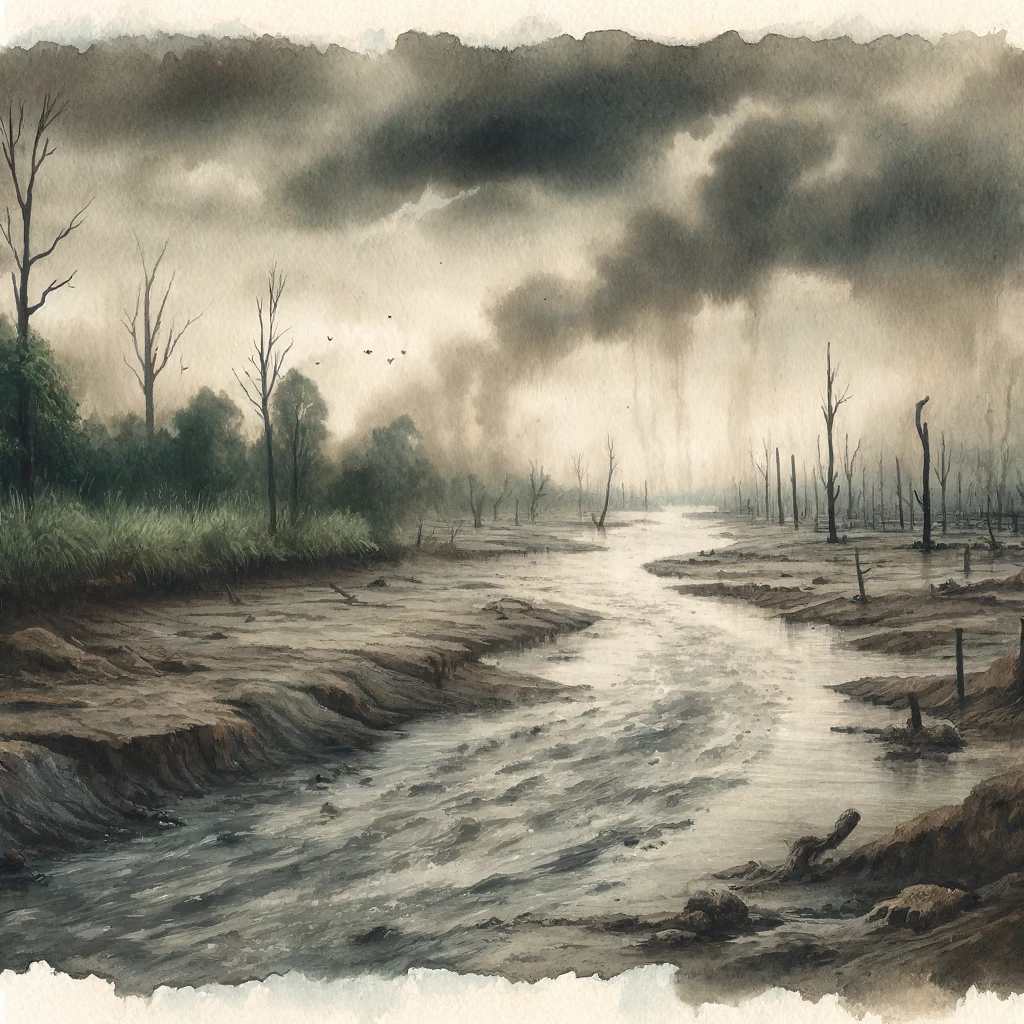
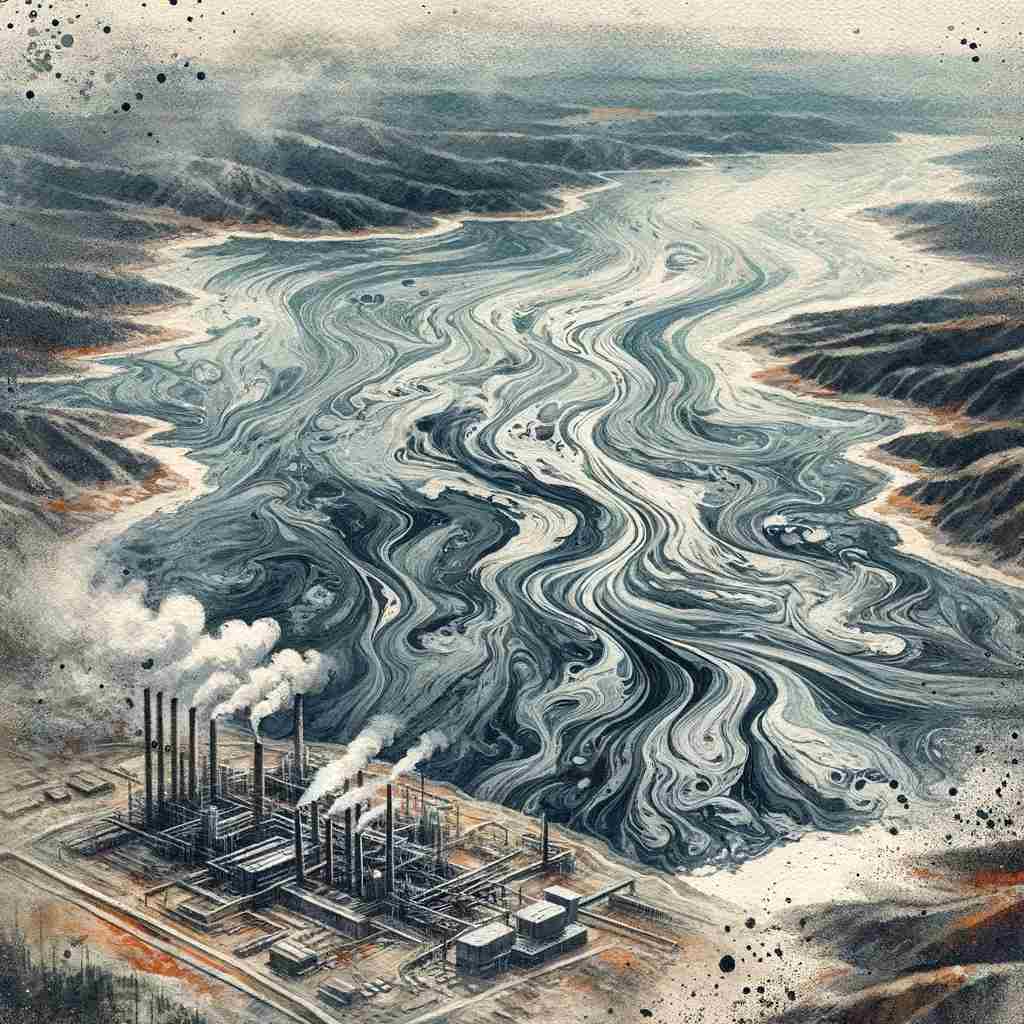
Meaning
“Ashen Waters” is a poignant haiku that reflects the devastating impact of pollution on water bodies. The first line, “Grey veils mute the blue,” uses the imagery of grey pollution overshadowing the natural vibrant blue of clean water, symbolizing the loss of purity. The second line, “Life stifled in silent depths,” illustrates the dire consequences for aquatic life, suffocated by contaminants. The final line, “Tears blend with the rain,” metaphorically adds human sorrow to the environmental degradation, suggesting our collective grief and responsibility.
Inspiration Behind
During a visit to a local river once teeming with life, I was disheartened to see the water murky and deserted, a stark contrast to my childhood memories of clear, lively waters. This sight stirred a deep sadness and a sense of urgency within me. Writing “Ashen Waters” became a way to express the grief of witnessing the impact of pollution firsthand and to convey a call to action to restore the health of our precious waterways.
Bleached Reefs
Once vibrant, now pale,
Corals mourn in silent white—
Seas whisper their loss.
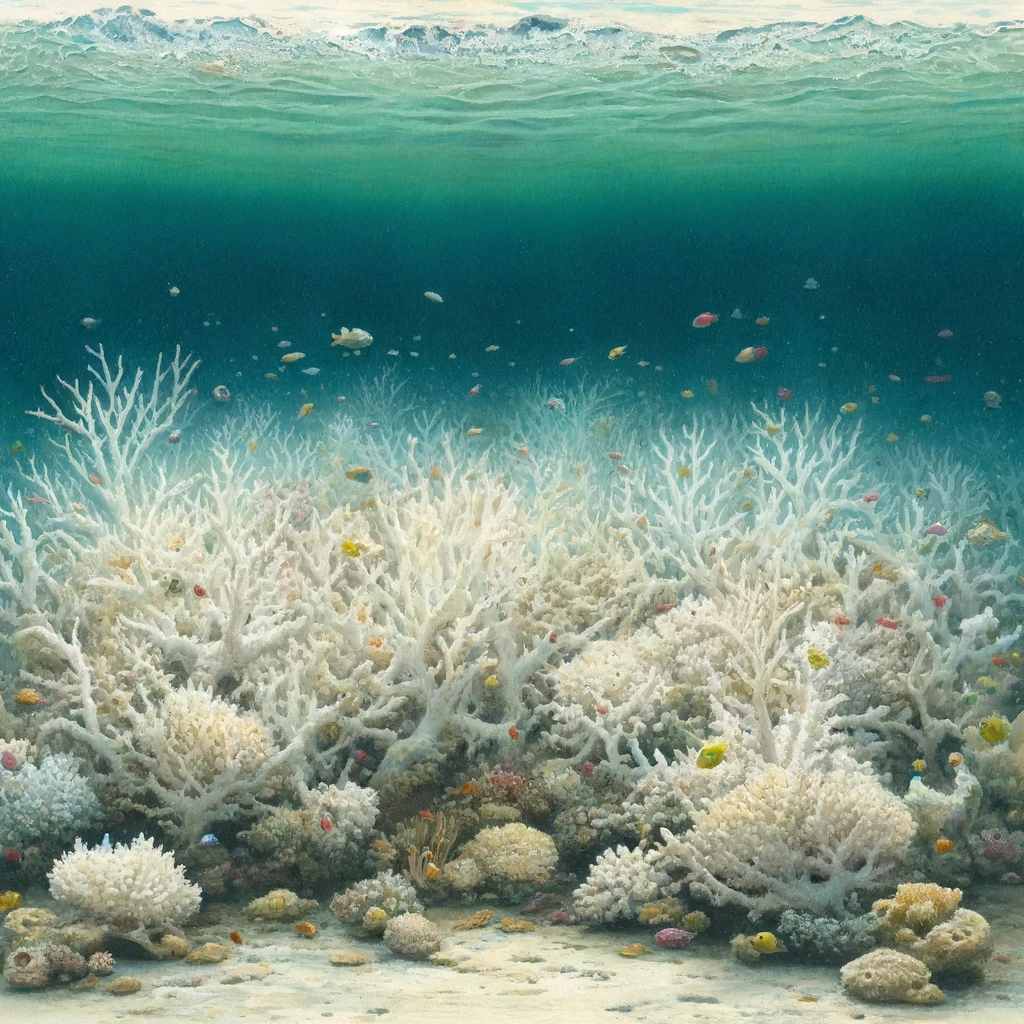
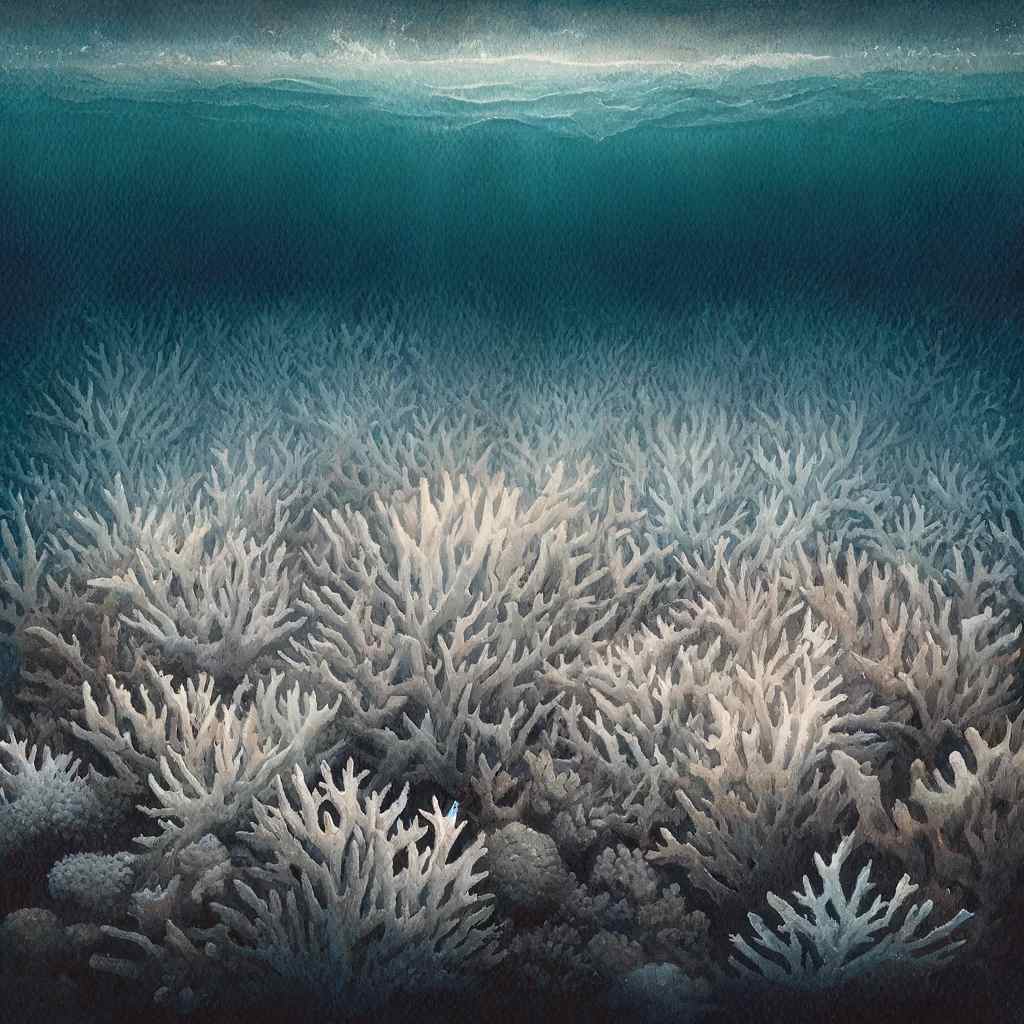
Meaning
“Bleached Reefs” is a haiku that starkly captures the tragic consequences of environmental neglect and pollution on coral reefs. The first line, “Once vibrant, now pale,” outlines the transformation of the reefs from colorful life centers to bleached skeletons. The second line, “Corals mourn in silent white,” personifies the corals as mourning their own demise, depicted in their bleached whiteness. The final line, “Seas whisper their loss,” portrays the ocean itself as grieving, softly lamenting the destruction of its integral ecosystems.
Inspiration Behind
My inspiration for this poem came from a documentary on ocean life that highlighted the dramatic bleaching of coral reefs. The images of once teeming underwater cities turned ghostly and barren struck a deep chord within me. I felt compelled to voice the silent suffering of these essential marine habitats through poetry, emphasizing the urgent need for action to protect and revive our oceans.
Smokey Skies
Ashen clouds crawl low,
Sun’s face blurred by smoky veils—
Breath held, earth whispers.
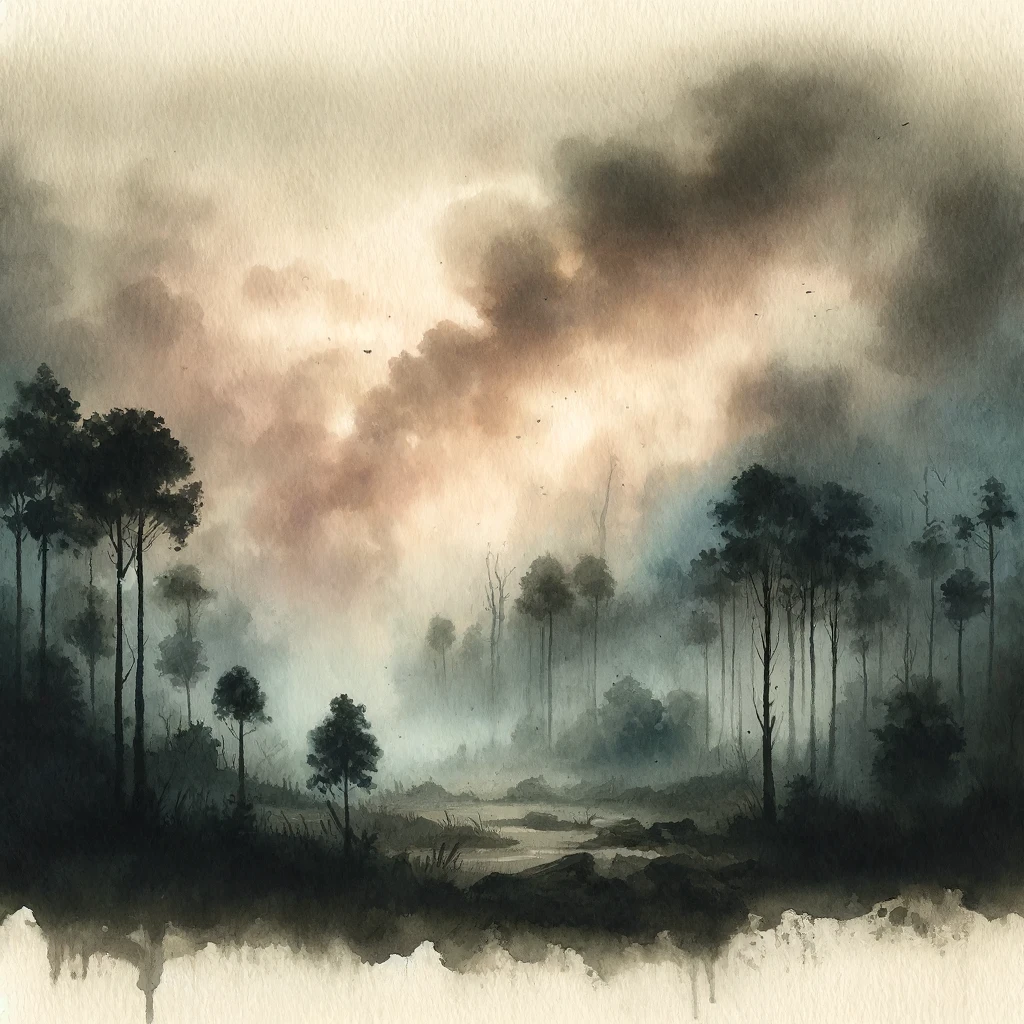
Meaning
“Smokey Skies” is a haiku that vividly portrays the troubling issue of air pollution. The imagery of “Ashen clouds crawl low” evokes a sense of oppression and gloom, indicating how pollution hangs heavily in the air. The phrase “Sun’s face blurred by smoky veils” illustrates the impact of pollutants that obscure the sun, symbolizing a broader environmental degradation. The final line, “Breath held, earth whispers,” reflects the stifling effect of pollution on the natural world and humanity, suggesting a quiet plea for change.
Inspiration Behind
The inspiration for this poem came during a walk in the city on a particularly hazy day, where the skyline was obscured, and the usual vibrant sunset was nowhere to be seen. The smoky air not only blurred the landscape but also prompted thoughts about the unseen damage we are causing to our planet. This led to a reflective moment, encapsulated in the haiku, urging awareness and action against the air pollution that clouds our daily lives and the future of our earth.
End Words
These Earth Day Haiku Poems poignantly encapsulate various environmental challenges, from the bleaching of coral reefs to the suffocating effects of air pollution. Each poem serves as a gentle reminder of the interconnectedness of all life forms and the urgent need to address the impacts of human activities on the planet. By reflecting on these issues through the concise and evocative format of haiku, we are invited to ponder our role in both the degradation and the potential healing of our natural world. The poems encourage a deeper appreciation for Earth’s beauty and a proactive stance towards preserving it for future generations.

